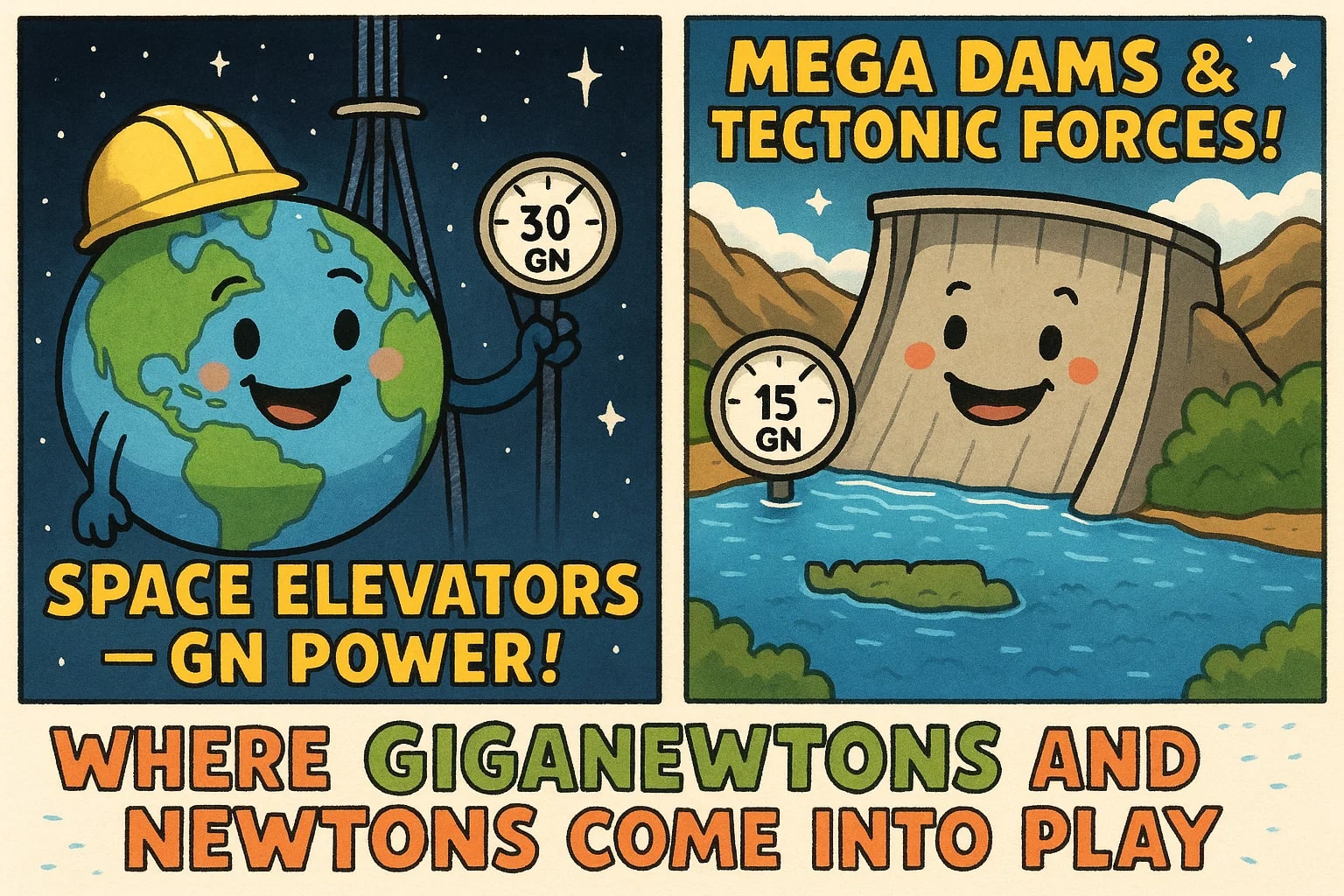Giganewton to Newton – How to convert GN to N
For projects involving extreme forces — think planetary engineering, megastructures, or high-energy physics — converting giganewton to newton is essential. These units scale force by billions, so understanding how to work between them keeps calculations manageable and precise. Here’s everything you need to know about these two force scales, along with practical examples.

What is a giganewton (GN)?
A giganewton (GN) is a very large SI unit of force, where 1 GN = 1 000 000 000 N. The prefix “giga‑” signifies one billion, so each giganewton equals a billion newtons. Forces of this magnitude typically appear in geophysics, aerospace, megastructure design, and planetary modeling.
To visualize: Earth’s gravity acting on a 100 million kg mass exerts nearly 1 GN of force — the scale we’re talking about here.
Giganewtons aren’t everyday units; they’re reserved for systems under extreme stress, like the tensile strength of entire space elevator cables (a theoretical application) or the load-bearing calculations of massive suspension bridges.
What is a newton (N)?
The newton (N) is the base SI unit of force, defined as the force needed to accelerate 1 kg of mass at 1 m/s². It’s used in nearly every branch of science and engineering, from studying projectile motion to testing materials and machine loads.
For context, Earth’s gravity pulls on a 1 kg mass with about 9.8 N of force, so 1 GN is the equivalent of 100 million kg under that same gravity.
Conversion formula
Since both units belong to the SI system, converting between them is straightforward:
1 GN = 1 000 000 000 N
Force (N) = Force (GN) × 1 000 000 000
Example:
A structural analysis shows that a proposed megabridge must withstand a tension force of 2½ GN. Converting to newtons:
2½ GN × 1 000 000 000 = 2 500 000 000 N.
Thus, 2½ GN = 2 500 000 000 N.
For additional conversions across other categories, check Jetcalculator’s Conversion tools or explore related resources like the Force Converter when working with designs involving multiple unit types.
Did you know?
-
The Golden Gate Bridge’s main cables collectively support forces approaching 3 GN when factoring in vehicles, wind, and structural weight.
-
A Magnitude‑9 earthquake can generate ground forces in the tens of GN across fault lines, reshaping entire regions.
-
The Saturn V rocket during liftoff produced around 34 MN — just 0.034 GN — showing how rare GN-scale forces really are.
-
Earth’s gravitational pull on the entire atmosphere is estimated at over 500 GN.
-
In planetary collision simulations, impact forces often reach into the thousands of GN, far beyond anything engineered by humans.
Mega-Scale Forces: Where GN and N Come Into Play
Newtons are ideal for most engineering and scientific calculations, but when forces escalate into billions of newtons, working in giganewtons becomes practical.
In aerospace engineering, concepts like space elevators or interplanetary launch structures involve tensions projected at dozens of GN. Recording those in raw newtons would mean constantly writing numbers with nine or more zeros, which is cumbersome and error-prone.
In geophysics, scientists model the forces exerted by tectonic plates in GN to simplify seismic and continental drift equations. Similarly, major dam structures, like China’s Three Gorges Dam, account for water and pressure forces in the GN range during peak seasonal flows.

Conclusion
Even if your final documentation needs to present force in N, working initially in GN allows for simplified, more manageable calculations. Converting back to newtons makes sense for reporting because most standards and engineering documentation use N as the base unit.
For example, a structural component experiencing 0.8 GN of stress can be expressed as 800 000 000 N. Converting helps cross-check calculations, apply safety factors, and ensure that design specs meet international standards.
Jetcalculator makes this process straightforward. Use our Conversion tools or, for projects involving other parameters, our Force Converter to handle every related conversion seamlessly.
From megastructures and planetary models to earthquake simulations, converting giganewton to newton keeps your data both precise and standardized — no matter how large the numbers get.

